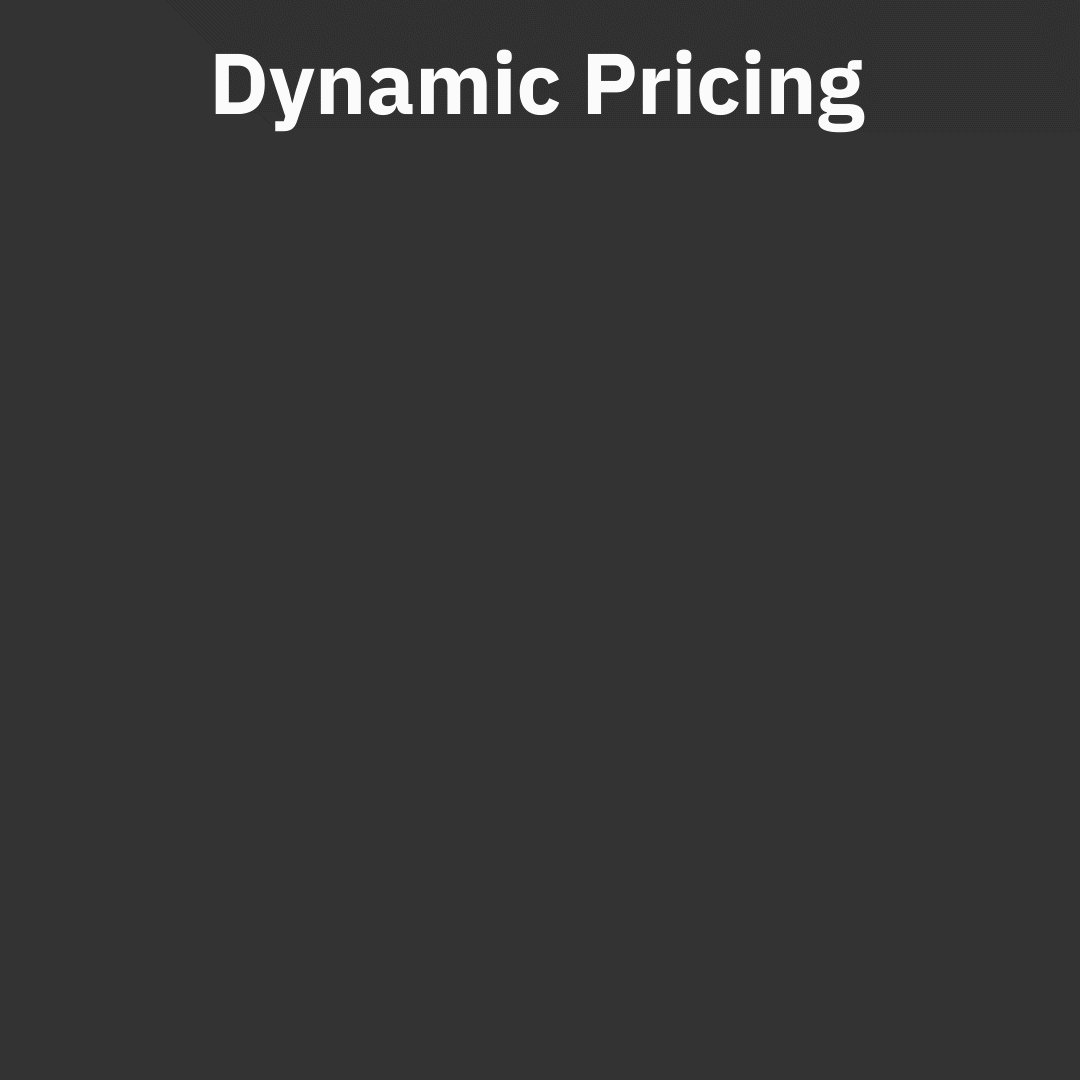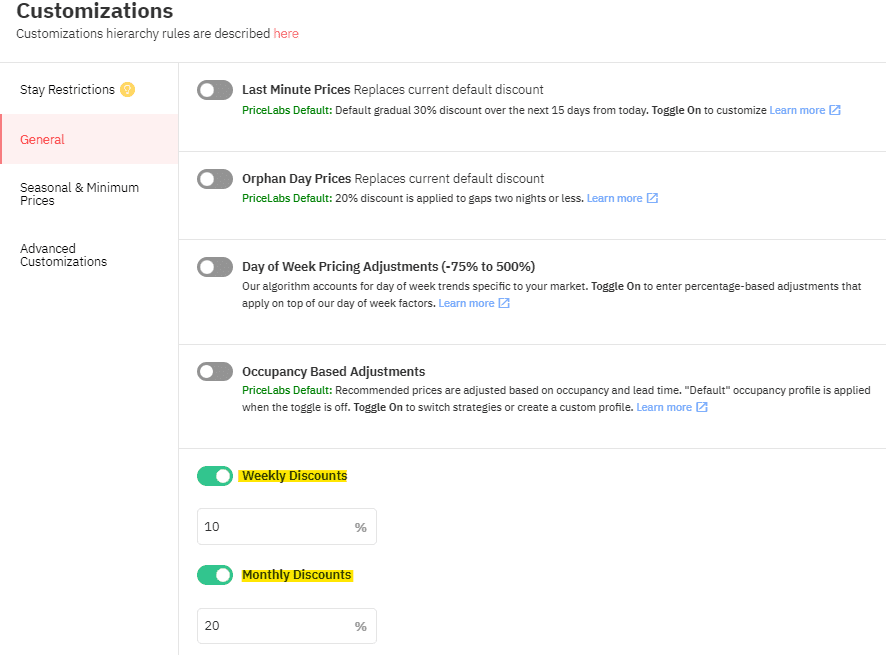Updated : Nov 6, 2025
Few things are as frustrating in the vacation rental business as looking at your calendar and seeing patchy occupancy. Those single, unbooked nights or lengthy gaps staring back at you represent lost revenue and operational inefficiencies. While it’s true that booking windows are generally getting shorter in many markets, a significant portion of those empty dates is self-inflicted, caused by restrictive rules or outdated vacation rental revenue management strategies.
The good news? By adopting a data-driven, proactive approach—the kind used by top-tier property managers—you can diagnose these issues and implement practical solutions to fill your calendar, turning those gaps into a guaranteed cash flow.
Diagnosing Revenue Leaks: Why Your Vacation Rental Dates Won’t Book
Before you start slashing prices in a panic, you need to understand the root cause of the empty date. The problem is often not a lack of demand but a lack of availability due to technical and policy barriers.
1. The Min-Stay Trap: How Rigid Minimum Stay Rules Kill Bookings
This is the most common and costly vacation rental revenue management mistake. Sticking to a fixed Length of Stay (LOS), such as a three-night minimum, immediately makes any two-night or single-night gap unbookable—a silent revenue killer.
- The Problem: An “orphan day” gap gets stuck between two longer reservations. Your strict minimum stay rule prevents any guest from booking that remaining, isolated date.
- The Fix: You need flexible, cascading minimums discussed in detail below.
Stop Losing Revenue: Fix Unbookable Dates and Maximize Occupancy
Ready to eliminate those costly calendar gaps? Leverage dynamic Minimum Stay Rules and Occupancy-Based Adjustments—the strategies top managers use to keep their calendars full, cut down on last-minute discounts, and boost their vacation rental revenue management.
Start Your Free Trial Now2. The Pricing Panic Cycle in Vacation Rental Revenue Management
Many operators fall into a damaging cycle where they set rates unrealistically high far out (holding inventory), fail to secure bookings during the critical early booking window, and are then forced to “slam” rates—often discounting 30–35%—at the last minute just to fill the calendar.
- The Problem: This frantic, last-minute discounting means you left money on the table that could have been captured gradually. If the price was high, but the conversion was zero, this will tell the booking algorithm to hide your listing.
- The Fix: Implement Occupancy-Based Adjustments (OBA) to ensure your rates remain continually responsive to the level of booking on your calendar.
3. Operational and Technical Blind Spots Costing Revenue
Sometimes, the problem isn’t your pricing strategy at all, but a breakdown in communication between your systems.
- Accidental Blocks: Blocks set for maintenance, owner stays, or simply an old admin error can render dates unbookable without the property manager realizing it. Regularly checking the calendar for unintended blocks is an important part of your vacation rental revenue management strategy.
- Sync Errors: Overlooking mapping or synchronization issues between your Property Management Software (PMS) and your pricing tool can result in blocked or mispriced dates, creating hidden calendar gaps.
Strategic Fixes: Dynamic Pricing and LOS Rules to Boost Occupancy
The solution involves balancing flexibility in minimum stays with intelligent, market-based pricing.
1. Action 1: Embrace Flexibility in Length of Stay (LOS)
Minimum stay rules are a critical and sometimes undermined element of a successful vacation rental revenue strategy. This is the most crucial lever to pull before dropping rates.
- Implement Cascading Minimums: Instead of rigid rules, allow your minimum stay requirement to become less restrictive as the arrival date approaches. For example, you might require seven nights far out, but will enable it to be lowered to three nights closer to arrival.
- Differentiate by Day and Season: Adjust minimum stays based on demand. For high-demand weekends, maintain a three-night minimum, but reduce it to a two-night minimum for weekdays or during low-demand periods.
- Remove Traditional Constraints: If your market traditionally enforces Saturday-to-Saturday bookings, strongly consider removing this rule. Flexibility captures more diverse demand.
2. Action 2: Master the Orphan Gap
The goal is to prevent those unbookable days (orphan gaps) that get stuck between two reservations from being governed by your standard, restrictive rules.
- Use Adjacency Logic: Leverage your dynamic pricing tool like PriceLabs to automatically use “adjacency logic” or “orphan day pricing” to influence dates next to existing bookings. The tool then automatically reduces the minimum stay to just one or two nights for those specific spots, instantly making them available to book.
- Fill Gaps with Extension Offers: You can check for calendar gaps between two existing bookings. Instead of listing that single night or gap publicly, you can send emails to existing guests who have booked before or after that gap, offering a small discount —like 25% —to encourage them to extend their stay and close the gap immediately.


PriceLabs Dynamic Pricing Tool
3. Action 3: Optimize Pricing with Occupancy and Data
Instead of relying on sweeping, non-responsive price cuts, use granular, data-driven adjustments that prioritize conversion.
- Rely on Occupancy-Based Adjustments (OBA): This rule is essential for preventing the Pricing Panic Cycle. OBA ensures your rates are continually responsive to how booked or open your calendar is, avoiding the need for massive, last-minute rate slashes. If occupancy is low, the price decreases incrementally; if occupancy climbs, premiums are added automatically.
- Prioritize LOS Discounts: Utilize weekly and monthly discounts to make longer stays more appealing. Structuring these discounts correctly—even by slightly increasing your base price and then applying a discount (e.g., 20-25% for a week’s stay)—is a powerful tactic because “everybody loves a good discount.” This is an investment in your future visibility and conversion rates.
- Set Expectations Proactively: If you anticipate a softer market or shorter booking windows, proactively adjust your base pricing further out. It may be prudent to “not try to shoot for the moon” and instead capture initial occupancy at reasonable rates, which boosts your listing’s visibility.


4. Action 4: The Continuous Operational Review
The revenue manager’s role extends beyond the price tag to encompass essential checks:
- Run the Opportunities Report: Use your PriceLabs Report Builder or “Opportunities” report to identify two issues: (1) Unbookable Inventory (hidden blocks) and (2) Low Conversion Rates (prices effectively too high). This report is your map to lost revenue.
- Communicate with Owners: Owners often struggle with market shifts. Proactively communicate market data—such as shrinking booking windows—to them. Hard conversations about minimum prices are necessary, especially if their restrictive demands are killing revenue.
- Update Your Listing Content: Ensure your photos and descriptions are optimized for the current season. A poorly optimized listing can crush visibility, regardless of your rate.
Conclusion: From Gaps to Guaranteed Revenue
The key to high-performing vacation rental revenue management isn’t just about setting a high price; it’s about maximizing availability and conversion. By mastering two core strategies—implementing flexible, cascading minimum stays and adopting occupancy-based pricing—you move beyond reactionary rate slashing. These proactive adjustments eliminate hidden unbookable dates, smooth out calendar gaps, and ensure that your property is always priced correctly for the demand curve. Start using your analytics to find and fix these silent revenue killers today, turning lost potential into reliable cash flow.
Frequently Asked Questions
1. What is an “unbookable date” and how is it different from an empty date?
An unbookable date is a night that appears open on your calendar but is physically impossible for a guest to book due to a restrictive rule set in your PMS or dynamic pricing tool. The most common cause is the “orphan day”—a one or two-night gap stuck between two longer reservations—which violates your standard minimum stay rule (e.g., three nights). An empty date is simply a date that hasn’t sold yet, while an unbookable date cannot sell until the rule is modified.
2. What is the most effective fix for orphan day gaps?
The most effective fix is the Orphan Day Strategy (or Adjacency Logic), which involves:
- Identifying the Gap: Using the Opportunities Report to find 1- or 2-night gaps.
- Strategic Override: Applying a specific, automated rule that reduces the minimum stay requirement to 1 or 2 nights only for that isolated, adjacent period. This makes the date available without changing your standard minimum for other days.
3. Why is Occupancy-Based Adjustment (OBA) better than last-minute discounts?
The OBA approach is superior because it prevents the damaging “Rate Hoarding” cycle.
- Rate Hoarding: You hold rates high, miss the booking window, and are forced into panic discounting (e.g., 30% off) at the last minute. This tells the algorithm your property is struggling.
- OBA: Your dynamic pricing tool incrementally and automatically adjusts your rates (up or down) based on how quickly your property is booking compared to the competition. This keeps your listing visible, converts early, and prevents the need for massive, desperation discounts.
4. Should I remove my minimum stay rules completely to fill my calendar?
No. While flexibility is crucial, removing all minimum stay rules can lead to operational headaches (increased cleaning costs, higher turnover). The strategy is to use Cascading Minimums:
- Far Out: Keep your minimum stay high (e.g., 5–7 nights) to prioritize longer, more profitable bookings.
- Closer In: Gradually reduce the minimum stay requirement as the arrival date approaches (e.g., dropping to 3 nights within 60 days, and 2 nights within 14 days). This strategy balances operational efficiency with conversion opportunity.
5. What data should I use when talking to an owner who insists on a high minimum rate?
When communicating with owners, you must use objective data to manage expectations:
- Conversion Rate: Show them the listing’s conversion rate (clicks vs. bookings). A high rate with no bookings indicates the price is too high.
- Market Comp Set: Show them a direct comparison of their property’s amenities, pricing, and resulting occupancy versus 3-5 similar competitors in the market.
- Revenue Loss from Unbookable Dates: Use your Opportunities Report to show the owner the actual dollar amount of potential revenue they are losing due to their own restrictive minimum stay or minimum rate settings. This often motivates them to agree to more flexible rules.







